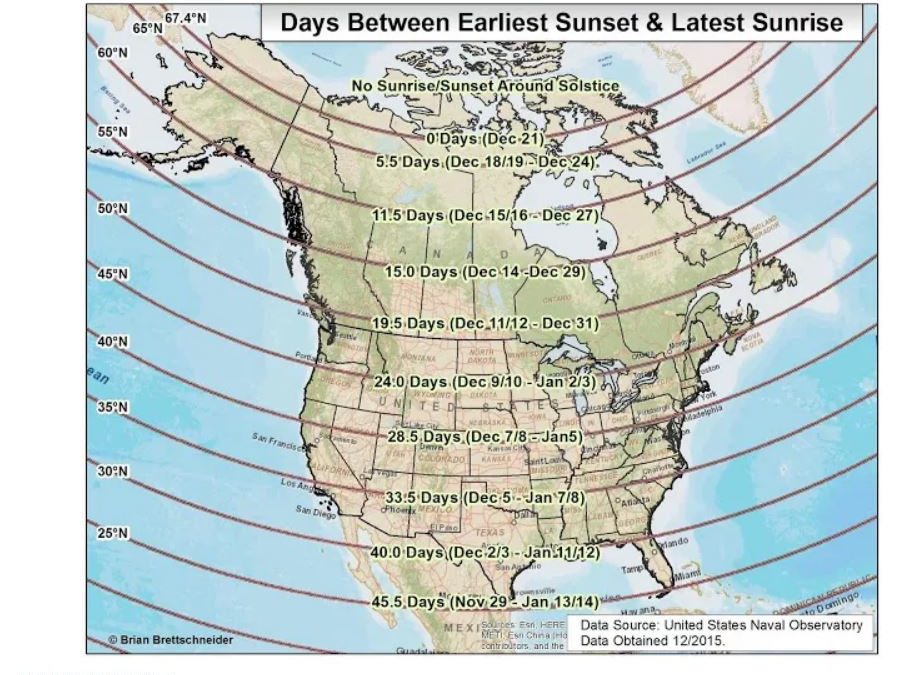Several times in my career I have attempted to explain why the shortest day of the year (the winter solstice, which is tomorrow) has neither the latest sunrise nor the earliest sunset of the year. Judging from subsequent reader questions, I haven’t had a ton of success.
Basically, it’s because the Earth goes around the sun not in a circle but an ellipse, which causes the planet to travel at different speeds at different times of the year (as Kepler first realized). That means the length of the solar-noon-to-solar-noon “day” constantly changes; it’s almost never 24 hours exactly. We don’t factor that changes into our clocks because it would be a pain and the discrepancy isn’t obvious most of the time. This solstice/sunrise/sunset anomaly is one of the times it is obvious.
It hadn’t occurred to me, however, that different latitudes experience difference time periods between the latest sunrise and earliest sunset until I saw the excellent map shown above via this Vox article about the solstice. It comes from this brilliantly obsessive blog about climate maps put together by an Alaskan meteorologist.
It be honest, I’m a little uncertain why different latitudes alter the spread between sunrise and sunset extremes. I’ll have to think about it: 3-D visualization isn’t my strong point.


 Return to the Concord Monitor
Return to the Concord Monitor
Quite a number of years ago, I bought a chance at the big raffle at the Warner Fall Foliage Festival & won a week’s trip to Barbados, which was great. While musing about the trip I thought we would enjoy long, languishing sunsets each evening – wrong! What I failed to realize was that we were near the equator and the earth’s speed there was such that sunset was nearly over when it began due to the speed of the rotation at that point which had only 24 hrs to get back to the same relative spot the next day. It was a surprise but I figured it out after thinking about it for a while while imbibing the local beer.
More beer – that’s the answer to my 3-D visualization problem.
The link for the Vox article about the solstice is wrong – it goes to Brittanica.
Thanks – I have fixed it.
Thankyou!I needed to get my head around this today as I watched the sunrise at work and will see it set before I leave for home….
This stuff is really badly covered in school, or at least in my school and in all the schools I have worked in as a lab tech, which is why I have become middle aged before starting to consider these basic astronomical things more… terrestrial life’s problems having dominated my thoughts up to now….
The Washington post have an extended explanation using the same map with more detail https://www.washingtonpost.com/news/capital-weather-gang/wp/2016/12/20/winter-arrives-wednesday-morning-five-maps-that-explain-the-solstice/?noredirect=on&utm_term=.bcdbd607d578
It will all be clear this evening after that post work bottle of beer..